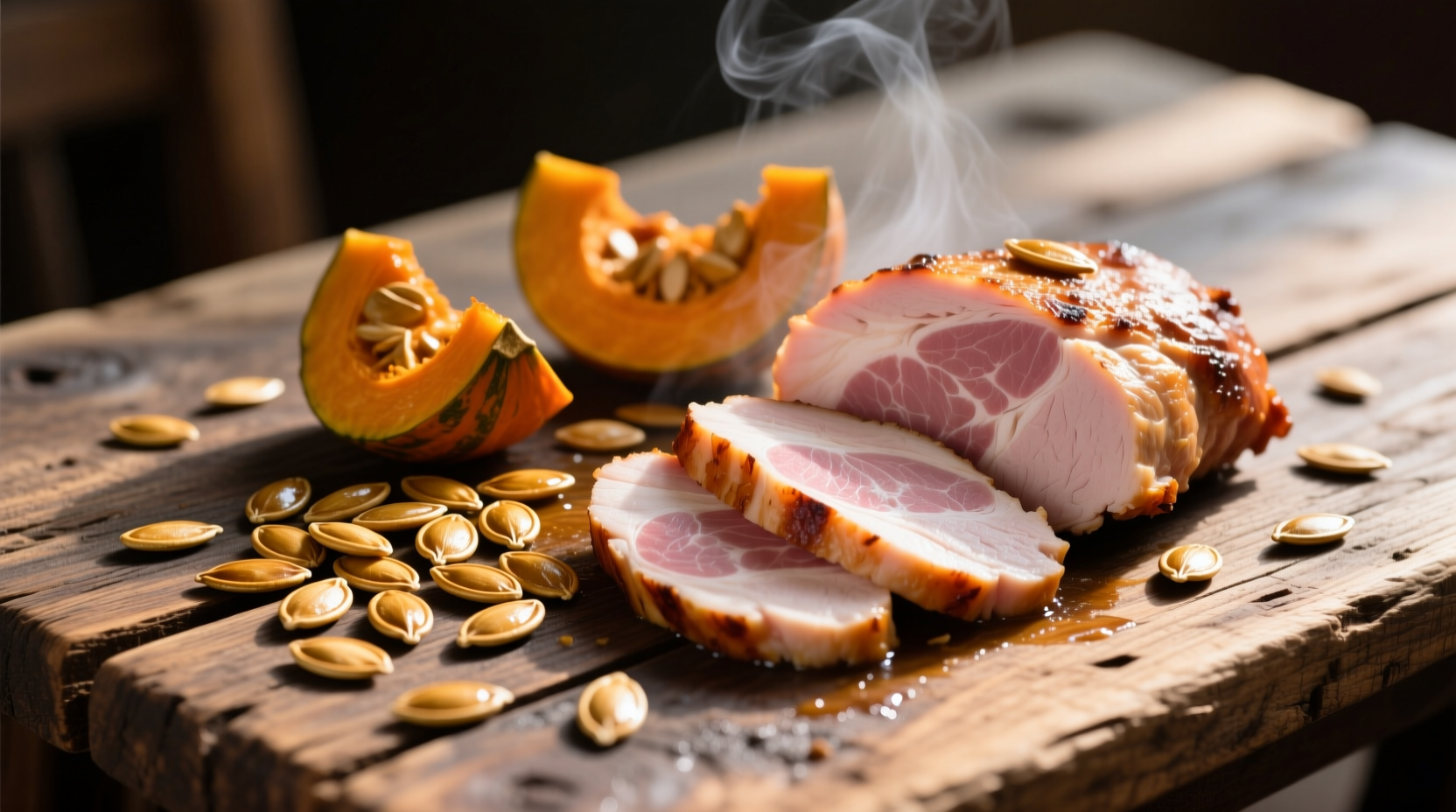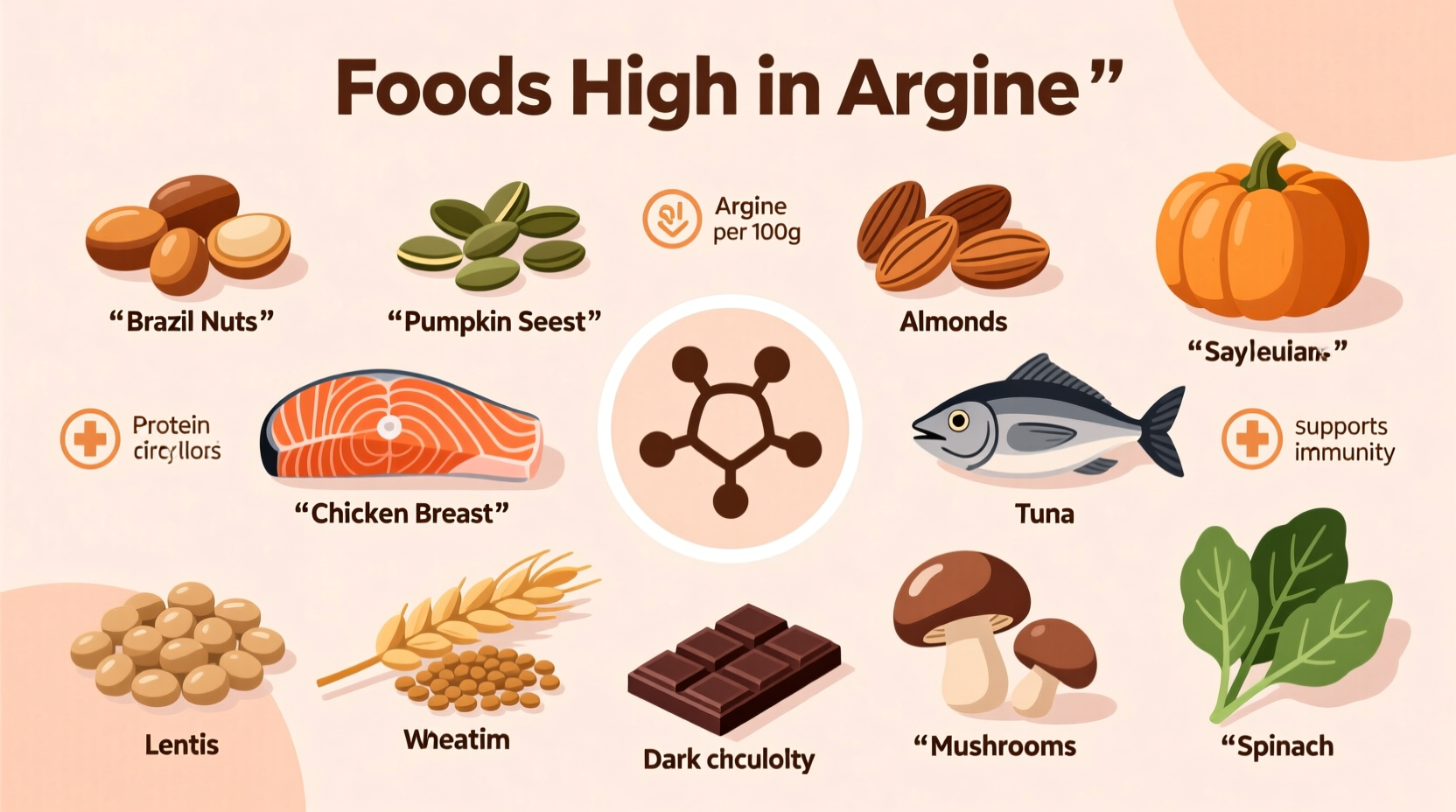Discover exactly which foods can boost your arginine intake and why this amino acid matters for your health. This comprehensive guide delivers scientifically verified information about arginine-rich foods, their precise nutrient content, and practical ways to incorporate them into your diet—backed by nutritional science rather than marketing claims.
Understanding Arginine: Why This Amino Acid Matters
Arginine is a semi-essential amino acid your body uses to produce nitric oxide, a compound that helps relax blood vessels and improve circulation. While your body can produce arginine naturally, certain health conditions and life stages increase your dietary requirements. Research from the National Institutes of Health shows arginine plays critical roles in:
- Supporting healthy blood pressure levels
- Enhancing exercise performance and recovery
- Strengthening immune system function
- Promoting wound healing processes
- Maintaining proper erectile function
Adults typically need between 2-4 grams of arginine daily, though athletes and those with specific health concerns may require more. Unlike protein supplements that make exaggerated claims, whole food sources provide arginine alongside other essential nutrients your body needs.
Top Arginine-Rich Foods by Category
Based on verified USDA FoodData Central measurements, these foods deliver the highest arginine concentrations per standard serving. Note that cooking methods can affect arginine content—gentle preparation preserves more nutrients.
| Food Source | Arginine (per 100g) | Protein Content | Additional Benefits |
|---|---|---|---|
| Turkey breast (roasted) | 2.7g | 30g | Rich in B vitamins and selenium |
| Pumpkin seeds (pepitas) | 5.3g | 30g | High in magnesium and zinc |
| Soybeans (cooked) | 2.3g | 17g | Complete plant protein source |
| Peanuts (raw) | 2.3g | 26g | Good source of healthy fats |
| Chicken breast (roasted) | 2.1g | 31g | Excellent vitamin B6 source |
Maximizing Arginine in Your Daily Diet
Simply knowing which foods contain arginine isn't enough—you need practical strategies to incorporate them effectively. Based on nutritional research from the US Department of Agriculture, these approaches deliver optimal results:
Nuts and Seeds: The Arginine Powerhouses
Pumpkin seeds contain more arginine per serving than any other common food. Just one-quarter cup provides nearly 4 grams. Try these preparation methods:
- Lightly toast seeds at 300°F for 15 minutes to preserve nutrients
- Add to morning oatmeal or yogurt for sustained energy
- Blend into homemade energy balls with dates and cocoa

Protein Sources: Meat and Seafood Options
Animal proteins generally contain higher arginine concentrations than plant sources. The Mayo Clinic notes that turkey provides the highest concentration among common meats. For optimal nutrient retention:
- Roast or grill instead of frying to preserve amino acid structure
- Pair with vitamin C-rich foods like bell peppers to enhance absorption
- Include 3-4 ounce portions in meals rather than large single servings
Plant-Based Arginine Sources
Vegans and vegetarians can still meet arginine needs through strategic food combinations. Soybeans, chickpeas, and lentils provide substantial amounts when consumed regularly:
- Combine legumes with whole grains for complete protein profiles
- Soak beans before cooking to improve nutrient bioavailability
- Include 1.5 cups of cooked legumes daily for therapeutic benefits
Important Considerations and Limitations
While arginine offers numerous health benefits, it's not appropriate for everyone. According to clinical guidelines from the American Heart Association, certain conditions require medical supervision when increasing arginine intake:
- Herpes simplex virus: Arginine may trigger outbreaks in susceptible individuals
- Low blood pressure: Those with hypotension should monitor levels carefully
- Post-heart attack recovery: Consult your physician before supplementing
- Kidney conditions: Impaired kidney function requires protein intake monitoring
Whole food sources provide arginine in balanced proportions with other amino acids, unlike isolated supplements which can create imbalances. The natural food matrix ensures optimal absorption and utilization by your body.
Putting It All Together: Sample Daily Meal Plan
Here's how to incorporate 5+ grams of arginine through whole foods in a single day:
- Breakfast: Greek yogurt with pumpkin seeds and berries (1.8g arginine)
- Lunch: Lentil soup with whole grain bread (1.5g arginine)
- Snack: Handful of peanuts and an apple (1.2g arginine)
- Dinner: Turkey breast with roasted chickpeas and asparagus (2.5g arginine)
This balanced approach delivers over 7 grams of arginine while providing complete nutrition—not just isolated compounds. Notice how each meal combines arginine sources with complementary nutrients for maximum benefit.











 浙公网安备
33010002000092号
浙公网安备
33010002000092号 浙B2-20120091-4
浙B2-20120091-4